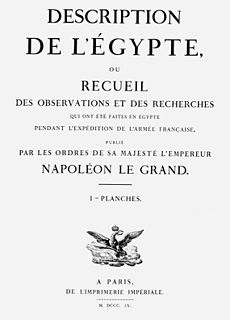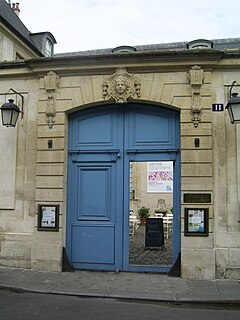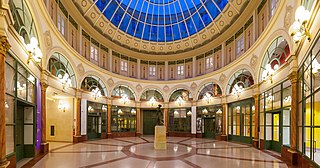

The Fondation Dosne-Thiers is a history library located in the 9th arrondissement of Paris at 27, place St-Georges, Paris, France. It is open to researchers who obtain recommendations from a member of the Institut de France.


The Fondation Dosne-Thiers is a history library located in the 9th arrondissement of Paris at 27, place St-Georges, Paris, France. It is open to researchers who obtain recommendations from a member of the Institut de France.
The foundation is housed within the Hôtel Dosne-Thiers, a former home of historian Louis-Adolphe Thiers (1797–1877) built in 1873 by architect Alfred-Philibert Aldrophe (1834–1895) to replace Thiers' earlier mansion on the site, which was destroyed in the Paris Commune. It was bequeathed to the Institut de France in 1905.
The Fondation contains a large collection of books and objets d'art assembled by Thiers, and is notable for its superb library of French history and a substantial body of Napoleonic memorabilia which may be viewed by prior request. The library also displays temporary exhibits.
The library, the Bibliothèque Thiers, specializes in the history of France from 1789–1900, including its general, political, military, social, and administrative history. It holds one of the world's largest collections on the First French Empire bequeathed by the historian and academician Frédéric Masson. All told, the library contains about 150,000 volumes, plus about 30,000 prints and cartoons, 1,000 drawings, and more than 3,000 manuscripts.

Sorbonne University is a public research university in Paris, France, established in 2018 by the merger of Paris-Sorbonne University, Pierre et Marie Curie University, along with smaller institutions. The date 1257 on its logo refers to the founding of Collège de Sorbonne by Robert de Sorbon, part of the university's early legacy. It is one of the most prestigious universities in Europe and the world: Sorbonne University's alumni and professors have won 33 Nobel Prizes, six Fields Medals and one Turing Award.

The Bibliothèque nationale de France is the national library of France, located in Paris. It is the national repository of all that is published in France and also holds extensive historical collections.

Louis Claude Frédéric Masson was a French historian.

The Bibliothèque de l'Arsenal in Paris has been part of the Bibliothèque nationale de France since 1934.
Jawāmi ul-Hikāyāt wa Lawāmi' ul-Riwāyāt is a famous collection of Persian anecdotes written in the early 13th century. It was written by Zahiriddin Nasr Muhammad Aufi, who lived during the reign of Shamsuddin Iltutmish (Altamash) the third Muslim Turkic sultan of the Sultanate of Delhi, and the book is dedicated to his minister, Nizam al-Mulk Muhammad, son of Abu Sa'id Junaidi.

The Description de l'Égypte was a series of publications, appearing first in 1809 and continuing until the final volume appeared in 1829, which aimed to comprehensively catalog all known aspects of ancient and modern Egypt as well as its natural history. It is the collaborative work of about 160 civilian scholars and scientists, known popularly as the savants, who accompanied Bonaparte's expedition to Egypt in 1798 to 1801 as part of the French Revolutionary Wars, as well as about 2000 artists and technicians, including 400 engravers, who would later compile it into a full work.

The Cabinet des Médailles, more formally known as Département des Monnaies, Médailles et Antiques de la Bibliothèque nationale de France, is a department of the Bibliothèque nationale de France in Paris. The Cabinet des Médailles is located in the Richelieu-Louvois building – the former main building of the library – on the Rue de Richelieu.

The Bibliothèque Mazarine, or Mazarin Library, is located within the Palais de l'institut de France, or the Palace of the Institute of France, at 23 quai de Conti in the 6th arrondissement, on the Left Bank of the Seine facing the Pont des Arts and the Louvre. Originally created by Cardinal Mazarin as his personal library in the 17th century, it today has one of the richest collections of rare books and manuscripts in France, and is the oldest public library in the country.

The École Nationale des Chartes is a French grande école and a constituent college of Université PSL, specialising in the historical sciences. It was founded in 1821, and was located initially at the National Archives, and later at the Palais de la Sorbonne. In October 2014, it moved to 65 rue de Richelieu, opposite the Richelieu-Louvois site of the National Library of France. The school is administered by the Ministry of National Education, Higher Education and Research. It holds the status of a grand établissement. Its students, who are recruited by competitive examination and hold the status of trainee civil servant, receive the qualification of archivist-paleographer after completing a thesis. They generally go on to pursue careers as heritage curators in the archive and visual fields, as library curators or as lecturers and researchers in the human and social sciences. In 2005, the school also introduced master's degrees, for which students were recruited based on an application file, and, in 2011, doctorates.

La Fondation Calvet is an art foundation in Avignon, France, named for Esprit Calvet, who left his collections and library to it in 1810. The foundation maintains several museums and two libraries, with support from the town. The original legacies of paintings, archaeological items, coins and medals, and medieval sculpture have been added to by many other legacies, and a significant deposit of works of art from the Louvre. The archaeological collections and medieval sculpture are now housed separately in the "Musée Lapidaire" - once the chapel of the Jesuit College. The main museum is in an 18th-century city mansion, to which modern buildings have been added; the Library bequeathed by Calvet, and the important collection of over 12,000 coins and medals, have moved to a different location in the city.

The Institut Tessin, also known as the Centre Culturel Suédois, is a museum in Paris dedicated to the history of Franco-Swedish artistic exchanges. It is located in the Hôtel de Marle at 11, rue Payenne in the city's 3rd arrondissement, and is open weekdays except Monday; admission is free.

The Bibliothèque-Musée de l'Opéra National de Paris is a library and museum of the Paris Opera and is located in the 9th arrondissement at 8 rue Scribe, Paris, France. It is no longer managed by the Opera, but instead is part of the Music Department of the National Library of France. The Paris Opera Library-Museum is open daily; an admission fee is charged.
La contemporaine is a French library, museum and archive center specialized on 20th century history. It was named until 2018 « Bibliothèque de documentation internationale contemporaine » (BDIC). The institutions has two centers, one in the Paris Nanterre University campus which hosts the archives and the library. The museum is located within the premises of the Hôtel National des Invalides in the 7th arrondissement of Paris.

The National and University Library is a public library in Strasbourg, France. It is located on Place de la République, the former Kaiserplatz, and faces the Palais du Rhin.

The Musée de la Révolution française is a departmental museum in the French town of Vizille, 15 kilometres (9.3 mi) south of Grenoble on the Route Napoléon. It is the only museum in the world dedicated to the French Revolution.

The Bibliothèque de la Sorbonne is an inter-university library in Paris, France. It is situated in the Sorbonne building. It is a medieval institution of the Sorbonne, which evolved over the centuries as part of the University of Paris. It is a common library of Panthéon-Sorbonne University, Sorbonne-Nouvelle University, Sorbonne University, Paris Descartes University, and Paris Diderot University. It is administered by Panthéon-Sorbonne University as per a governing agreement signed among these universities in 2000.

The Polish Library in Paris is a Polish cultural centre of national importance and is closely associated both with the historic Great Emigration of the Polish élite to Paris in the 19th-century and the formation in 1832 of the Literary Society, later the Historical and Literary Society. The Library was founded in 1838 by Adam Jerzy Czartoryski, Julian Ursyn Niemcewicz and Karol Sienkiewicz, among others. Its first task was to safeguard all surviving books, documents, archives and treasures of national significance. It has become a historical and documentary resource open for the use of Poles and other researchers and visitors. The Library houses three museums related to significant Polish artists: the Salon Frédéric Chopin, the Adam Mickiewicz Museum and the Bolesław Biegas Art collection. UNESCO's Memory of the World Register rates it as an institution unique of its kind.
The Kandinsky Library is a library of 20th and 21st century visual arts located at the Pompidou Centre in Paris, France. It also serves as the Documentation and Research Centre of the French National Museum of Modern Art.

The Institut National d'Histoire de l'Art, commonly abbreviated INHA, is a French research institute, created and governed by Decree No. 2001-621, and situated in Paris. The Institute develops scientific activity and contributes to international cooperation in most fields of art history and heritage by exercising research, training and knowledge-diffusion.
The Enfer is a special department of the Bibliothèque nationale de France in Paris. It is a special collection of books and manuscripts of an erotic or pornographic character which, because of their rarity and value, may be seen only with authorization. The Enfer was established 1836–1844 and is one of the most famous Private Case collections. In 2013, the Enfer contained about 2,600 volumes, dating from the 16th century to the present.